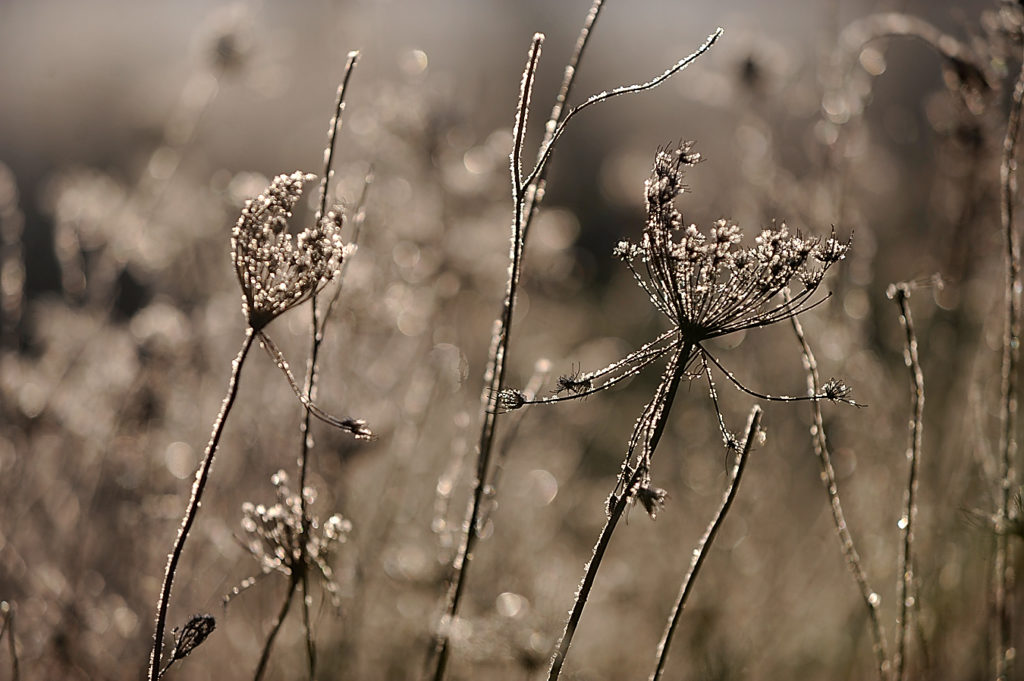How to protect your plants from an unexpected spring frost

Your seedlings are hearty, and your beds are ready. Excited for the season, you transplant your precious seedlings — tomatoes, cucumbers, kale and everything in between — into your garden. You think everything is ready to go for a successful, bountiful spring.
Then you check the weather report for the week, and your heart sinks. Even though it is well into spring, a below-freezing day is in the forecast.
Many gardeners, no matter where they may be located, have had this experience. An unexpected spring frost can be heartbreaking for gardeners who have already invested time and money into their gardens.
“I think most gardeners who have a couple seasons under their belts have experienced cold damaged crops,” said Kate Garland, horticultural specialist at the University of Maine Cooperative Extension.
Frost and cold impact different plants in different ways, but at the most fundamental level, it causes ice crystals to form in plant cells, which can cause cell walls to burst and makes water unavailable to plant tissues and disrupts the movement of fluids. The impact of frost damage can be immediately visible, like slimey, blackened leaves, or they can appear late in the growing season with yellowed or otherwise discolored fruit.
“It manifests itself differently depending on the crop,” Garland said.
Thankfully, late spring chills do not have to spell doom for your garden. With a few simple tools and season extenders, you can easily protect your fledgling crops from the cold.
Which plants do I need to protect from a spring frost?
Generally, Garland said to be vigilant if the weather forecasts indicate that temperatures will be anywhere in the range of thirty degrees Fahrenheit.
“If there’s any discussion of all in the weather forecast of a frost, then I would go ahead and protect [your garden],” she said. “If they’re anywhere close to a frost, even high 30’s [degrees Fahrenheit], just be on the cautious side and use your best judgment to protect what you invested it.”
It’s important to note though that even when these conditions are met, not all of your crops need to be protected from frost.
Cold hardy vegetables will weather the cold with finesse. That includes crops like peas, spinach, carrots, radishes, beets, cabbages and other leafy greens. On the other hand, tender summer crops — tomatoes, cucumbers, peppers, zucchini and the like — will be impacted by the cold unless they are protected.
Seeds that have been planted but not yet germinated, for the most part, should be able to survive a surprise spring frost.
“If the seeds haven’t germinated yet you don’t have to worry about protecting them at all,” Garland said. “Anything that’s been directed seeded should be fine hanging out in the soil. They can tolerate cold temperatures.”
The exception, however, is seeds that have been planted too early or are especially susceptible to wet conditions and pests.
“If they go in too early and are not adapted, they could rot or be susceptible to maggots,” Garland explained. “Peas, for example, can tolerate cold wet soils really really well. Beans, on the other hand, would be really susceptible to rotting and other pathogens. Corn is another example [of a vulnerable seed].”
What do I need to protect plants from an unexpected frost?
Garland said that your best defense against a late frost is row cover.
“It is an investment to get row cover for your crops, but you can reuse it over a couple of years,” Garland said. “You’re only using it for two to three weeks, and it’s easy to pack it up and put it in a plastic bin where the mice can’t get to it.”
The gauzy white fabric can be easily purchased at your local garden supply store. If you cannot find or afford row cover, you can use old bed sheets as a makeshift substitute.
“You want something lightweight that can breathe,” Garland said. “That row cover also makes a nice pest barrier.”
Garland said that some plants — tomatoes and peppers especially — will not tolerate having the sheet laying lightly over them, so you should build a frame out of wire or PVC pipes above your plot to drape the row cover over.
Cover your crops first thing in the morning when the spring frost is expected to arrive to prevent condensation from collecting under the fabric and freezing. Make sure your plants are well watered the day before the frost so they still stay hydrated throughout the day.
You can also cover your plants with cloches, which can be purchased or easily made using the top half of plastic soda bottles or milk jugs. Drape a sheet or row cover over them for extra protection.
In addition to protecting the tender green stems and leaves of your plants, you can also cover the ground with a layer of straw or wood mulch, which will help keep the soil warm. Your number one priority, though, should be to protect the plants themselves.
“[Mulch] can help keep the roots a little bit warmer, but it’s not going to protect the shoot tissue, which is most vulnerable,” Garland said.
Remove all coverings as soon as the danger of frost has passed the next day to keep from smothering your plants.
If you notice frost damage despite your best efforts, though, Garland said the best thing to do is cut your losses and replant.
“One of the key things I suggest if you have damaged plants is to invest in another set of plants instead of trying to wait for that plant to recover,” Garland said. “If you do end up in that situation, just start over again. There’s plenty of time to replant.”
